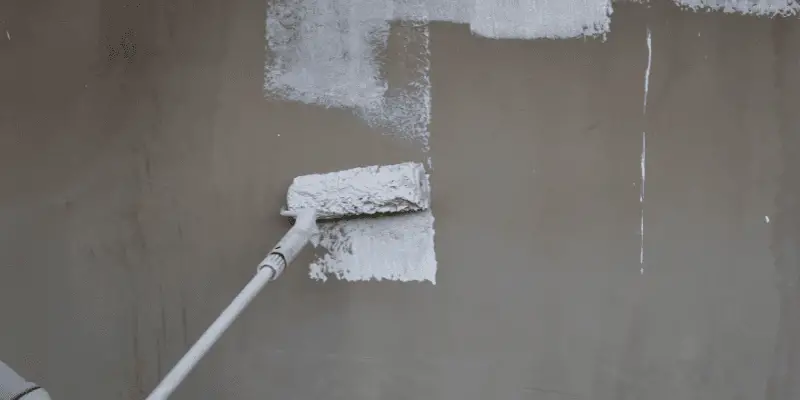Primer is a preparatory coating applied before the paint, while paint is the colored, protective coating applied on surfaces. When choosing between primer and paint, it’s important to understand the differences and how they work together.
Primer provides a smooth, even surface for paint to adhere to, enhances paint durability, and improves coverage. It also seals the surface, preventing stains and allowing the paint to bond properly. On the other hand, paint adds color and provides protection against wear, moisture, and UV rays.
Understanding the distinctions between primer and paint will help you achieve the best results for your painting project. Whether you’re painting a wall, furniture, or any other surface, selecting the right primer and paint is crucial for a successful and long-lasting finish.
Understanding The Purpose Of Primer And Paint
When it comes to painting, understanding the purpose of primer and paint is crucial for achieving a successful and durable finish. Both primer and paint play distinct roles in the painting process, and understanding their functions is essential for achieving the best results. In this post, we’ll delve into the differences between primer and paint and the specific roles each plays in the overall painting process.
Definition Of Primer And Its Function
Primer can be defined as a preparatory coating applied to surfaces before the application of paint. Its primary function is to act as a foundation for the paint, promoting adhesion and providing a smooth, even surface for the paint to adhere to. In addition, primer helps to seal porous surfaces, preventing the absorption of the paint and enhancing its durability and longevity. Furthermore, it aids in preventing stains and discoloration from bleeding through the paint.
Role Of Paint In The Finishing Process
Paint plays a crucial role in the finishing process, adding color, protection, and aesthetic appeal to the surface. Aside from enhancing the visual appeal of a surface, paint acts as a protective layer, shielding the underlying material from environmental elements such as moisture, UV rays, and physical damage. It also serves as a barrier against corrosion, extending the lifespan of the surface. Furthermore, paint contributes to the overall aesthetic of the area, allowing for personalization and creativity in interior and exterior design.
Different Types Of Primers And Paints
When it comes to painting, understanding the differences between primers and paints is crucial. The right combination of primer and paint can make a significant difference in the overall finish and longevity of your project. This article will delve into the various types of primers and paints, giving you a comprehensive overview of their characteristics and uses.
Overview Of Oil-based And Water-based Primers
Oil-based Primers: These primers contain natural or synthetic oils and are ideal for covering stubborn stains and sealing porous surfaces. They are highly durable and provide excellent adhesion, making them suitable for exterior surfaces and areas prone to moisture.
Water-based Primers: Known for their quick drying time and low odor, water-based primers are easy to clean with soap and water. They are a popular choice for interior surfaces and are compatible with most paint types. Additionally, they offer excellent resistance to mold and mildew.
Understanding The Various Paint Finishes
Flat or Matte Finish: Providing a non-reflective appearance, flat/matte finishes are excellent for hiding imperfections and are commonly used on ceilings or walls with minor flaws.
Eggshell Finish: With a soft, subtle sheen, eggshell finishes are durable and easy to clean, making them ideal for living spaces such as bedrooms and hallways.
Satin Finish: Offering a gentle sheen, satin finishes are resistant to moisture and mildew, making them perfect for kitchens, bathrooms, and other high-traffic areas.
Semi-Gloss Finish: Known for its high durability and shine, semi-gloss finishes are easy to clean and are often used on doors, trim, and furniture.
Gloss Finish: Providing a highly reflective surface, gloss finishes offer maximum durability and are suitable for doors, cabinets, and other areas that require frequent cleaning.

Factors To Consider When Choosing Primer And Paint
When choosing between primer and paint, it’s important to consider the surface type, the condition of the surface, and the desired finish. Primer is essential for promoting adhesion and providing a smooth base, while paint adds color and protection. Understanding the differences between the two will help you achieve a successful and long-lasting paint job.
When it comes to choosing the right primer and paint for your project, there are several important factors to consider. Surface preparation and compatibility, environmental considerations, and application techniques are all key aspects to take into account. By understanding these factors, you can ensure that you select the most suitable products for your specific needs.
Surface Preparation And Compatibility
Before applying primer and paint, it’s crucial to properly prepare the surface. Surface preparation includes cleaning, sanding, and repairing any imperfections. Additionally, it’s essential to consider the compatibility between the primer and paint to achieve the best adhesion and overall finish.
Environmental Considerations And Application Techniques
When choosing primer and paint, taking into account environmental considerations is imperative. Factors such as temperature, humidity, and ventilation can significantly impact the application and drying process. Additionally, understanding the application techniques for both primer and paint can ensure a smooth and professional finish while maximizing their effectiveness.
By carefully considering these factors when choosing primer and paint, you can guarantee the success of your project. Always prioritize proper surface preparation, compatibility, environmental considerations, and application techniques to achieve the best results.
Application And Usage Guidelines For Primer And Paint
When it comes to achieving a flawless and long-lasting finish on any surface, understanding the application and usage guidelines for primer and paint is crucial. Proper preparation is key to a successful painting project, and this starts with knowing how to apply primer and paint effectively. Here, we’ll delve into the proper techniques for applying primer and the best practices for using different types of paints to help you achieve professional results.
Proper Techniques For Applying Primer
Before applying paint, it’s important to prepare the surface with a suitable primer. The following techniques can help ensure proper application:
- Surface Preparation: Clean and sand the surface to remove any dirt, dust, and imperfections before applying the primer.
- Primer Selection: Choose the appropriate primer for the specific surface, whether it’s wood, metal, concrete, or drywall.
- Application Method: Use a brush, roller, or sprayer to apply the primer evenly, ensuring complete coverage.
- Drying Time: Allow the primer to dry completely before applying the paint, following the manufacturer’s recommendations.
Best Practices For Using Different Types Of Paints
When it comes to painting, different types of paints require specific techniques to maximize their effectiveness. Consider the following tips for using various types of paints:
- Latex Paint: Use a high-quality brush or roller for a smooth finish. Apply multiple thin coats for better coverage.
- Oil-Based Paint: Apply with a natural-bristle brush, and avoid overworking the paint to prevent brush marks.
- Acrylic Paint: Thin with water for better flow and apply in thin, even coats to prevent streaks and drips.
- Epoxy Paint: Follow precise mixing and application instructions to ensure proper adhesion and durability.
Frequently Asked Questions On Difference Between Primer And Paint
What Is The Difference Between Primer And Paint?
Primer is used to prepare the surface before painting, while paint provides color and protection. Primer helps paint adhere better and provides a smooth base, while paint adds color and creates a finished surface.
Why Do I Need To Use Primer Before Painting?
Using primer before painting helps the paint adhere better to the surface, improves durability, coverage, and provides a uniform base for the paint color. Primer also seals the surface, prevents stains, and enhances the overall finish of the paint.
Can I Use Paint As A Primer?
While using paint as a primer may seem convenient, it is not recommended. Primer is specifically formulated to prepare the surface for painting, providing better adhesion, sealing properties, and improving the overall finish of the paint.
How Many Coats Of Primer Do I Need?
In most cases, one coat of primer is sufficient to prepare the surface for painting. However, for surfaces with significant imperfections or dark colors, a second coat of primer may be necessary to achieve better coverage and adhesion for the paint.
Conclusion
To sum up, the difference between primer and paint is crucial in achieving a professional finish for your project. Choosing the right primer and paint combination can make a significant difference in the durability and appearance of your surface. Understanding their unique purposes will ultimately lead to a successful and long-lasting outcome for your painting project.


